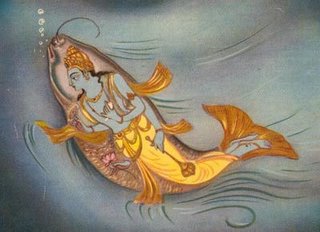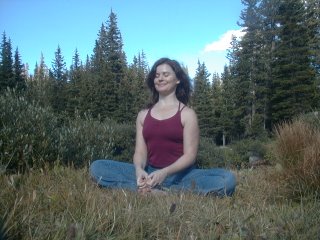She Who Spreads Brightness in the World

Today, September 22, 2006, marks the beginning of a very sacred time in the year for three different religions.
For Jews, it is the start of the Rosh Hashanah or "the head of the year." Beginning in the 7th month of Tishri in the Hebrew calendar, the holiday commemorates the creation of the world. The Torah refers to Rosh Hashanah as Yom Teruah, day of sounding the shofar or the traditional ram's horn. When the horn is blown, it is meant to awaken the heart to this time of spiritual renewal. The High Holy Days end with the Day of Atonement, Yom Kippur.
For Muslims, today marks the beginning of the month of Ramadan, when the holy Qur'an was revealed to the Prophet Muhammad by the angel Gabriel. It begins with the first sighting of the crescent Moon and is calculated as the 9th month in the Islamic lunar calendar. During the entire month of Ramadan, Muslims from all over the world engage in a daily fast called "siyam" or "saum," which literally means "to be at rest." The most important day of all is the 27th night, the "Night of Destiny," when the Prophet Muhammad was blessed with the vision of the Qur'an.
And for Hindus, today begins the annual Navaratri or "Nine Nights of the Goddess" celebration. This is a time of the year in which a great cleansing and purification takes place throughout the whole of nature. Progressively over 9 days, a different aspect of Mother Divine manifests to eradicate suffering, replacing it with a brilliant light of purity that triumphs over darkness.
Today in the world perhaps the darkest cloud that hangs over our world is the perception of religious difference and the practice of intolerance. It astounds me that people actually kill and die because they think what they believe is the only truth.
The Vedic sages were wise in claiming that "Truth is One; The Wise call it by many names." I think this is beautifully demonstrated this year by the coincidence of these three holidays.
Every year I commemorate the Navaratri holiday with my own offerings. This year, I've given this time a theme -- "She Who Spreads Brightness in the World" -- and I will dedicate my efforts to a different manifestation of light on each of the 9 nights. I'll post my daily worship schedule and photos on this blog. Please feel free to join me or send me any prayers or intentions you would like me include.
More tomorrow on the specifics...Lokah Samasthah Sukhino Bhavantu! (May All Beings Be Happy!)






